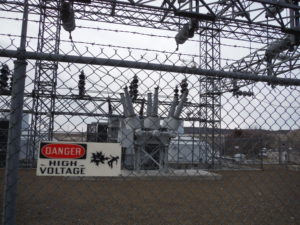View Jim’s Talk: Part 1 and Part 2
Aired September 26, 2018

Aired Sept. 7, 2018
Aired Sept. 7, 2018
Aired August 12, 2018
Thursday, June 14th, 2018 the Orca Task Force reconvened after a month of preparation. Dam Sense participated as one of the public members and listened to the conversations throughout the day.
Although dam breaching was one of the proposed action steps, it was in the form of “gather and study information to consider” dam removals. Not a very definitive plan, if you ask me.
This tide is changing, but all too slowly. Ken Balcomb, Director of Center for Whale Research, dropped a bomb which shook the room and opened eyes to the necessity of immediate action instead of more talk and studies.
L92 (male) is missing and presumed dead. And J50 (a young female) is in “bad shape”. Ken reported the young female orca displaying a peanut head; where the fat layer becomes so thin the skin starts to take the form of the skull bone beneath. A clear sign of emaciation.
The Orca Task Force has 3 sub-groups: Prey Group, Vessel Group, and Contaminants Group. After the first half of the day, wherein each group presented their preliminary topics to be covered, the whole congregation split into each subgroup. Members of both the Task Force and the public were asked to choose the group they felt most interested in. It should come as no surprise that most Task Force and public attendees went to the Prey group session.
Although Jim Waddell, Civil Engineer, provided each Task Force member with a 5-Means paper at the initial meeting a month ago, the most stated in writing about the Snake River was in the Discussion Guide: A National Environmental Protection Act environmental review process is currently underway to examine dam removal on the Snake River… [but regarding other dams*] A cost-benefit analysis of potential dam removals is necessary before moving forward on recommendations for removal.
The Lower Snake River dams have been extensively studied in 2002 and continues to be studied by various parties to this day. During the public comments, Jim held up the 2002 Breach Appendix (the appendix itself is over 500 pages!) to prove how extensively. Creating another Environmental Impact Statement is a waste of time and money.
The 5-Means paper references a cost-benefit analysis of the Snake River, which clearly shows breaching to be far more economically beneficial (and currently has a return of $0.15 to $1 invested!). Furthermore, time is not in our favor to create a cost-benefit analysis of the “Nooksack and several other dams” in consideration.
If the Orca Task Force is to clearly achieve its mandate of taking action to recovery to Southern Resident Killer Whales while there is still time, breaching at 2 least of the Lower Snake River dams in 2018 is the most effective, affordable, implementable, and scientifically-founded way.
How much longer can these orcas survive while we remain inactive?
Another month gone. One more orca dead. Still no action.
____________________________
What can you do to help?
Here are the contacts of some of the Orca Task Force members. Please write to them and share your voice on the urgency of breaching the 4 Lower Snake River Dams! These dams are ready to be breached and can be breached in a matter of months if the Corps of Engineers or BPA decides to do so. They just need the push!
| Co-chair, Stephanie Solien, vice chair of the Puget Sound Partnership Leadership Council | stephanie.solien@psp.wa.gov | |
| Co-chair, Thomas (Les) Purce, formerly president of Evergreen State College | president@evergreen.edu | |
| JT Austin, Governor’s office | Jt.austin@gov.wa.gov | 360-902-0638 |
| Phil Anderson, Pacific Salmon Council | pmand001@comcast.net | (360) 268-9141 |
| Rep. Brian Blake (D), District 19, Aberdeen | Leg assistant: Dawn.thomas@leg.wa.gov | 360-786-7870 |
| Rep. Drew MacEwen (R), District 35, Union | drew.macewen@leg.wa.gov | 360-786-7902 |
*”Nooksack and other dams”
Aired May 17, 2018
Jamie Daniels
District Director,
Office of Washington State Representative Dan Newhouse
Jamie,
I understand Congressman Newhouse is inviting comments today from stakeholders regarding increased spill and other issues related to federal dams in his district. While I am not a constituent, that is a resident of his district, I am a stakeholder since I am a rate and tax payer. In addition, my background as a civil engineer retired from the US Army Corps of Engineers, which included three years as the Deputy District Engineer for Programs in Walla Walla, gives me more than average understanding about the cost and policies of operating large projects. I should also point out that since briefing the Congressman in January of 2015 about the costs and benefits of the lower Snake River Dams I have invested well over 6,000 hours of my time digging into the thousands of pagers of documents and data to unravel the truth about these dams.
Knowing what I do it pains me to see our elected officials, the public and even agency heads fall for the misleading arguments about the pros and cons of these four dams. These argumentative statements developed primarily by special interest groups, lobbyist and trial attorneys on both sides of the argument are now so convoluted as to make no sense whatsoever. For instance, will more spill recover salmon? No. Will it cost BPA a lot of money? No, given the loss of money the four lower Snake River Dams incur nearly every day and the overall financial hemorrhaging of BPA, BPA would more likely save money with more spill. Will transporting more fish lead to salmon recovery? No. Will the billion dollar investment made since 2000 on passage improvements on the 4LSRD’s lead to salmon recovery? No. Have these investments and other expenditures for the 4LSRD’s diverted funds from other more important dams in the Federal Hydro System? Yes. If the 4LSRD’s are breached, will it have devastating economic effects in eastern Washington? No. Indeed it will lead to several thousand new jobs and over $500 million per year in direct and indirect economic benefit to the six counties adjacent to the lower Snake River. Will irrigation farmers along Ice Harbor pool be left high and dry with worthless land? No. Is the Corps restricted from taking immediate action now by on going Biological Opinion litigation? No. I could go on.
Instead I offer a letter I have written to my neighbors in eastern Washington that asks and expounds on these and other important issues concerning the benefits, or not, of the 4LSRD’s. It is attached, along with two short summaries concerning the economics and salmon status on 4LSRD’s and a paper that describes how existing policies within the Corps and BPA provide the means now to benefit virtually all stakeholders when a free flowing river is returned to the lower Snake valley.
I respectfully request that these documents be entered into the discussions. I am available for questions and will also be asking for a meeting the next time I am in the area.
Thank you,
Jim Waddell
Civil Engineer, PE USACE Retired
Port Angeles Washington
360-775-7799
Jim Waddell, CE/PE, Retired US Army Corps of Engineers & Damnation movie cast member is interviewed by Jeffrey Ventre MD, of Blackfish. (27 min)
Aired February 27, 2018

What will it take to remove the four lower Snake River dams and restore access for salmon to, and from, 5,500 miles of spawning habitat? Will it require Congressional approval? A federal court order? Both would take many years, but the dams must be removed much sooner. Not only are the river’s ESA-protected salmon on the cusp of extinction, but those fish are desperately needed now to avoid extinction of the culturally unique and much beloved Southern Resident orcas.
A panel discussion about the Elwha and the Snake rivers, called A Tale of Two Rivers, took place at the Burke Museum January 24th. Most likely all of the over 200 salmon and orca advocates in the room, including the panelists, saw the urgency to remove the Snake dams, but the only two options offered by the panel were either to ask our dysfunctional Congress for permission, or wait a decade or more for a new federal court order, which requires a new BiOp, and a new EIS, then new litigation, etc.
The panelists were two highly esteemed environment reporters for major newspapers. After opening remarks Palouse Tribe Chief Jessie Nighthawk spoke passionately about the failure of the government and the Army Corps to uphold treaty rights that promise salmon while his people suffer without them. One panelist answered: “The Army Corps has made it absolutely clear that they are not going to let those dams come down until Congress tells them to. So that means talking to your political leaders here in Washington and in Idaho, and Oregon, and Montana.”
The other panelist replied “We talk about how Congress is going to have to make the decision, well actually…this issue is squarely in the judiciary. So we’re in this process and it’s going to go on for several years, and that’s where you come in, because it is a public process and it’s absolutely your job to know where it is in the courts and to stay involved.”
A woman in the audience stated emphatically: “The Army Corps absolutely has the power to uphold treaty rights. I think they’re trying to put the focus on someone else, and for them to say that is really a slap in the face. They do have that power, and that’s just the truth.”
That authority was clearly stated in a January 2017 letter from then Assistant Secretary of the Army Ellen Darcy, who wrote: “the Army Corps is committed to following the guidance in the 2002 FR/EIS as a framework for its actions, which includes ongoing assessments as to the efficacy of the alternatives it has implemented to date; the results of those assessments will inform our next steps…” That 2002 Environmental Impact Statement (EIS) still determines mitigation efforts, but after billions have been spent the salmon are still disappearing. Indeed, the EIS states that Alternative #4, breaching the dams, provides the only opportunity to recover Snake River salmon and steelhead, but it wasn’t chosen by the Corps.
Federal judges have reminded the Army Corps five times that they are required by the Endangered Species Act to cease harming endangered salmon to the verge of extinction. Tribal Treaty rights also demand salmon conservation. The Corps also has a fiduciary responsibility to fund only economically beneficial projects, but the four dams are losing money, returning only 15¢ for every $1 invested by taxpayers and ratepayers. Irrigators and grain shippers can stay in business with a tiny fraction of the money saved by dam removal.
When the panel ended we were left with two convoluted, confusing and disheartening paths to Snake River dam removal, both inaccurate and impossible to achieve in time to avoid extinction of endangered Snake River salmon and Southern Resident orcas. It is our responsibility to tell our political leaders to urge the Army Corps to proceed with dam removal immediately.
Howard Garrett

On Tuesday, January 30th, 2018, Bonneville Power Administration (BPA) announced that it would be cutting funding for fish and wildlife programs.
BPA has been in a death spiral lately. It would rather defend the dams to the death than admit that it’s wrong.
For a closer look into the reasons why, read Linwood Laughy’s recent article on the subject.
How much has BPA spent on fish and wildlife in the past several decades? The answer is here in their letter to Congresswoman Cathy McMorris Rodgers.
With all this spending, how are the salmon doing?
Finally, how can the BPA problem be solved? How can it save itself? The solution is actually quite simple. It would allow the agency to not only save itself, but also save Snake River salmon, steelhead, and Southern Resident Killer Whales.